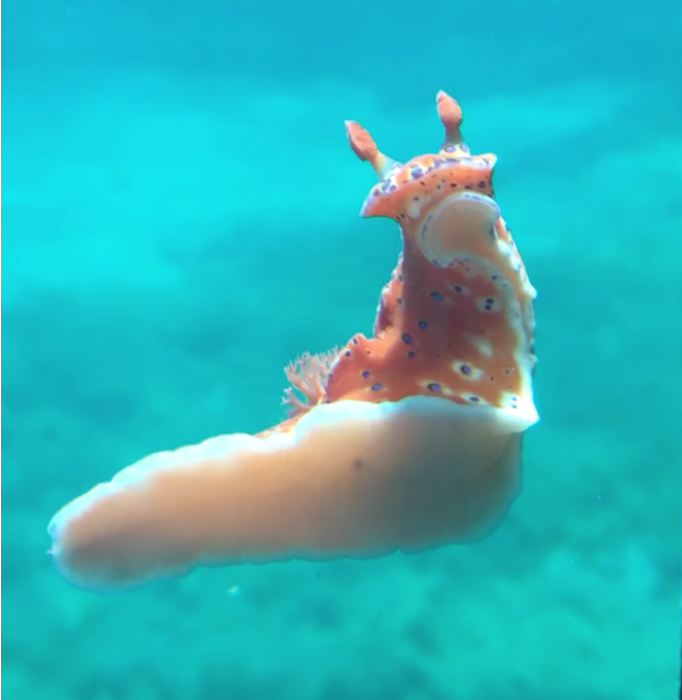Nudibranch; Short-tailed
Ceratosoma brevicaudatum
The short-tailed nudibranch is the largest of over 100 described species of brightly coloured nudibranchs in the family Chromodoridae, recorded within Australia. The name “short-tailed” is derived from a bright red patterned dorsal ‘tail’ located behind the gills which contains most of the animal’s defensive glands. These glands store toxic chemicals extracted from sponges upon which they feed, and act as a defensive lure attracting potential predators to the most distasteful part of the animal’s body.
The short-tailed nudibranch is characterised by the bright purple, white-edged spots covering a vivid orange-red mantle. The colouration of the species can vary greatly depending on their location within Australia from a yellow mantle colour in New South Wales to the pink or orange red in southern Australia and Victoria. They have a firm body, with a long muscular foot, a prominent head and two sensory tentacles known as rhinophores which are covered in fine plates. The Greek equivalent to the term “nudibranch” means naked lung, so half way along on the surface of the body is a colourful tuft of gills. It is one of the most frequently sighted nudibranch species along the southern coast due to its great abundance, vivid colouration and large size, where it grows up to 15 centimetres. Nudibranchs are hermaphrodites, where each animal possesses both male and female sexual organs. During copulation, two individuals join together via a short tube located on the right side of the body, where sperm sacs are exchanged over a period of several minutes to several hours. Up to one million eggs are laid in ribbon-like gelatinous coils.
Other common names include: Short-tailed ceratosoma
Occurrence at the Busselton Jetty:
Short-tailed nudibranchs are a very common invertebrate species observed on a daily basis at the underwater observatory. They are mostly seen blending in amongst the colourful array of sponges, bryozoans and ascidians, however are found at all levels of piles and among the rubble and fallen debris on the seafloor. They have been observed mating on many occasions. They range in small juveniles to large mature adults.
Image by: O. Rynvis
